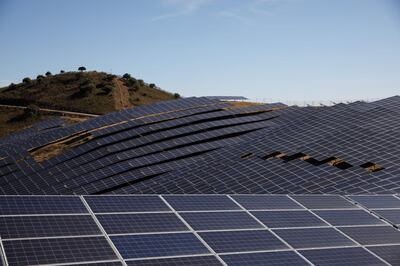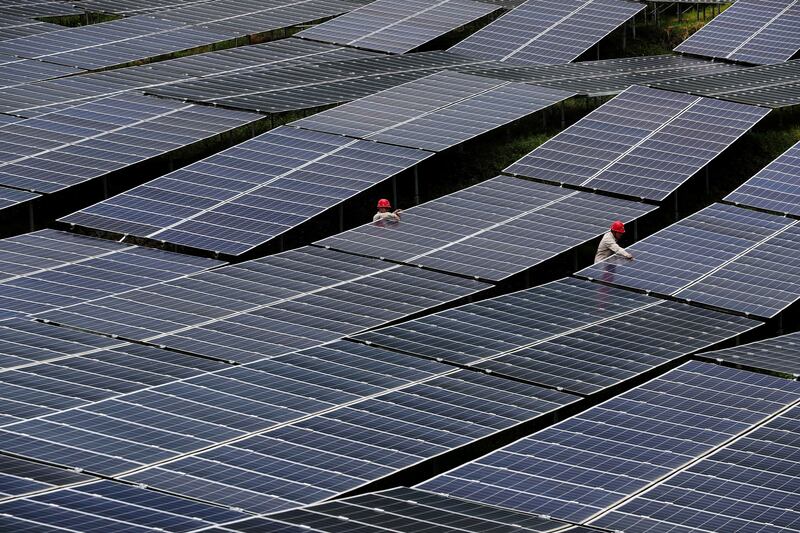Shipments of global solar photovoltaic (PV) inverters increased last year amid higher demand in markets where governments are racing to meet climate goals, a report has shown.
The amount shipped grew by 22 per cent or 40,250 megawatts of alternating current on an annual basis to 225,386 MWac, energy research consultancy Wood Mackenzie said on Friday.
This was mainly driven by strong growth in Europe, India and Latin America, where government support increased to meet decarbonisation goals, it said.
“Despite soaring raw material prices, supply chain challenges and delayed constructions, global PV inverter shipments continue to rise," said Annie Bernard, a research analyst at Wood Mackenzie.
"Leading vendors have become bigger and the top players continue to consolidate market share in 2021."
A solar inverter is a device that converts direct current electricity, which is what a solar panel generates, to alternating current electricity, which the electrical grid uses.
Inverters help regulate the flow of electrical power.
There has been a major shift towards clean energy amid the global drive to seek alternatives to fossil fuels.
Globally, new renewable power capacity rose 6 per cent in 2021 to a record 295 gigawatts, according to a report by the International Energy Agency.
This year, the IEA expects global capacity additions to rise 8 per cent to 320 gigawatts — equal to an amount that would come close to meeting the entire electricity demand of Germany.
Solar PV, in particular, is forecast to account for about 60 per cent of the increase in global renewable capacity this year, with a 25 per cent rise in the commissioning of 190 gigawatts of projects, the report said.
Utility-scale projects will account for about two thirds of overall PV expansion in 2022, driven by China and the EU, the IEA said.
The Asia-Pacific region made up more than half, or 116,064 MWac, of the global solar PV inverter shipments in 2021, Wood Mackenzie's report found.
Shipments to China, India and Australia accounted for the increase in demand.

Europe accounted for 23 per cent of the global market, with inverter shipments with a capacity of 50,770 MWac.
The market increased its inverter shipment capacity by more than 17,000 MWac in 2021, with an annual growth of 52 per cent.
Growing demand in Germany, Italy and the Netherlands, as well as Poland’s target of 7,300 MWac of solar PV capacity by 2030, contributed to the significant increase, the report said.
However, the US recorded a slight reduction of 360 MWac in inverter capacity shipped in 2021, accounting for 14 per cent of the global market share.
Supply chain constraints, record-level raw material costs and rising costs for developers contributed to the annual dip, the report said.
China's Huawei retained its position as the world's top solar PV inverter vendor for the seventh consecutive year, followed by Sungrow and Growatt.
Together, the top three vendors control more than half of the world’s solar PV inverter market, Wood Mackenzie said.
The global top 10 solar PV inverter vendors controlled a market share of 82 per cent in 2021, up 2 percentage points from 2020, according to the consultancy.






